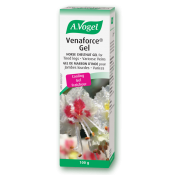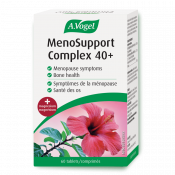What is Perimenopause?
Perimenopause means "around menopause." It is also known as a transitional phase because it occurs several years before menopause. During this time, a woman's body produces less estrogen, becomes less fertile and experiences irregular menstrual periods.
Menopause, on the other hand, is a time when a woman has not had a menstrual cycle for 12 months straight. During this phase, ovulation stops and levels of estrogen drop. Menopause officially indicates the end of the female reproductive phase.
Perimenopause: Common Symptoms
Every woman is different. Some women do not experience physical changes during perimenopause except for irregular periods that stop when they reach menopause. Other women may encounter symptoms such as night sweats, hot flashes, mood swings, vaginal dryness, joint and leg pain.
The 6 most common reasons many women experience leg pain during perimenopause and menopause:
1. Falling Estrogen levels
Estrogen levels begin to fall during perimenopause. Estrogen is a hormone that is essential for the wellbeing of our joints as it reduces inflammation and swelling, and facilitates hydration. During perimenopause or menopause, a woman's ovaries either stop producing estrogen or the levels begin to decline thus triggering joint pain, swelling, weakness and a lack of mobility.
Solution:
- Hormone Replacement Therapy (HRT) or MenoSupport Complex
Many women at this stage will turn to HRT for relief as suggested by their medical doctors. The combination of hormones may help to regulate the rates of estrogen in certain women with symptoms. However, HRT is not without it's side effects and often poses a problem for women taking it. For this reason many women seek natural alternatives to HRT, one of which is A.Vogel's MenoSupport Complex which acts as a hormone balancer and thus is helpful for relieving symptoms.
2. Magnesium Deficiency
When estrogen levels begin to decline, magnesium absorption may be affected. Magnesium is essential for proper muscle function and can help with muscle issues such as cramping, fatigue or tremors. Magnesium has been found to be effective in the management of chronic and extreme muscle pain.
Solutions:
- Take a Magnesium Supplement
A.Vogel's MenoSupport Complex is perfect as it acts as a hormone balancer which also contains magnesium. Magnesium may also be obtained from one's daily diet. Look for Magnesium-rich foods such as green leafy vegetables, nuts, especially almonds, cashews, peanuts, black beans, milk, peanut butter, whole wheat bread, avocado and rice. - Take Mag Phos
Magnesium Phosphate or Mag Phos is a wonderful tissue salt remedy that may provide relief from leg pain, leg cramps and muscle pain.
3. Circulatory Problems
Estrogen protects women from circulatory system disorders. When estrogen levels fall during perimenopause, the lack of estrogen makes women more susceptible to circulatory problems. Poor blood circulation is one of the main causes of leg pain. Poor circulation can contribute to more severe problems, such as severe leg swelling, varicose veins and restless leg syndrome.
Solutions:
- Consider Horse Chestnut
Making some simple lifestyle and dietary changes including the addition of Venaforce tablets or topical gel can help improve circulation and aid with heavy and tired legs as well as varicose veins. A.Vogel's Venaforce may help with circulatory difficulties. Horse chestnut, the plant extract in Venaforce, has been extensively researched for its ability to help with chronic venous insufficiency (CVI) - a circulatory problem in which the veins do not efficiently return blood from the legs to the heart. Clinical trials have concluded that horse chestnut taken as an extract acts as an effective and safe short term treatment for CVI, nearly as effective as wearing compression socks. - Elevate Your Legs.
Elevating one's legs keeps the stress off of the veins as well. - Exercise Regularly.
Exercise is a perfect way to improve your circulation as it keeps your blood pumping. According to the American Heart Association, intense physical exercise supports the heart, lungs and circulation, and the association recommends at least 90 to 150 minutes exercise in a week.
4. Dehydration
As women transition into menopause, the ovaries produce less estrogen, which can disrupt the hormonal system that controls thirst and fluid intake. This can lead to dehydration. Fluids hydrate our muscles and help them stretch and relax easily. As such, dehydration is a common cause of leg cramping.
Solutions:
- Drink more Water.
Drinking at least 8–12 glasses of water a day to help ease the symptoms of menopause and hydrate your muscles to get relief from your leg pain. - Limit Caffeine Intake.
Caffeine is a natural diuretic. Skip the caffeine because it can contribute to an electrolyte imbalance which can lead to dehydration.
5. Poor Posture
Osteoporosis or loss of bone density may occur during menopause due to the loss of calcium in the bones. There can be a slight reduction in the size of the bones located in the spine that could lead to problems with posture. Lower back and leg pain are common symptoms that may occur due to strains or poor posture. Bad posture while standing or sitting, particularly while working at a desk, can over time stress the back, which can contribute to lower back pain, hip or leg problems.
Solutions:
- Stretching Exercises.
Regular stretching of the muscles can reduce muscle stiffness along the back which will help to improve posture. - Be active
Regular exercise or any physical activity can help build up the muscles necessary to maintain proper posture. - Maintain a healthy weight
Excess weight can put extra pressure on the muscles and force the body out of balance. Thus taking that added pressure off is very important.
6. Restless Leg Syndrome
Restless leg syndrome (RLS) is a widespread neurological movement condition or a sleep disorder found mostly in females during the perimenopausal transition. Leg pain is the most common symptom of RLS. Cramping mostly comes about during the early evening or later at night. Restless leg syndrome comes on gradually and with time, and the legs become more affected.
Solutions:
Treatment of RLS is mostly focused on the underlying root cause and thus must be individualized. Some may benefit from the following lifestyle improvements:
- Improving Blood Circulation
If varicose veins are believed to be the reason, regular exercise, wearing compression stockings and taking Venaforce will help. - Limit Caffeine and Alcohol
Reducing or completely removing caffeine and alcohol from one's diet can be very effective. - Quit Smoking
Stop smoking this will dramatically lessen or prevent complications from occurring. - Get a Good Night's Sleep
Having proper sleep and exercise will improve circulation and benefit some of the people dealing with RLS.
References :
https://www.hopkinsmedicine.org/health/conditions-and-diseases/perimenopause
https://www.healthline.com/health/menopause/difference-perimenopause
https://www.healthline.com/health/menopause/difference-perimenopause#symptoms
https://www.womanandhome.com/health-and-wellbeing/health/common-aches-pains-in-menopause-318372/
https://www.medicalnewstoday.com/articles/321064#treatments
https://www.ncbi.nlm.nih.gov/pubmed/28392498
https://www.ncbi.nlm.nih.gov/pmc/articles/PMC2146789/
https://www.healthline.com/health/restless-leg-syndrome/link-between-magnesium-and-rls
https://www.medicalnewstoday.com/articles/322191#symptoms
https://www.hylands.com/products/8-mag-phos
https://www.pritikin.com/leg-pain-poor-circulation
https://healthyfeetforlife.com/blog/item/38-sedentary-lifestyle-can-cause-poor-circulation.html
https://www.fishertitus.org/health/foods-that-improve-circulation
https://www.ncbi.nlm.nih.gov/pmc/articles/PMC3984489/
https://theremedyroom.com/2014/09/dehydration-during-menopause-and-peri-menopause/
https://blog.metagenics.com/post/2018/07/11/7-common-causes-of-leg-cramps/
https://www.healthline.com/nutrition/11-natural-menopause-tips#section7
https://tiphero.com/home-remedies-legs
https://www.webmd.com/pain-management/ss/slideshow-muscle-cramps-foods
https://muschealth.org/medical-services/geriatrics-and-aging/healthy-aging/posture
https://www.medicalnewstoday.com/articles/325424#lifestyle-factors
https://www.medicalnewstoday.com/articles/325365
https://www.ncbi.nlm.nih.gov/pubmed/18781488
https://www.medicinenet.com/restless_leg_syndrome/article.htm
https://www.medicinenet.com/spider_and_varicose_veins_pictures_slideshow/article.htm






